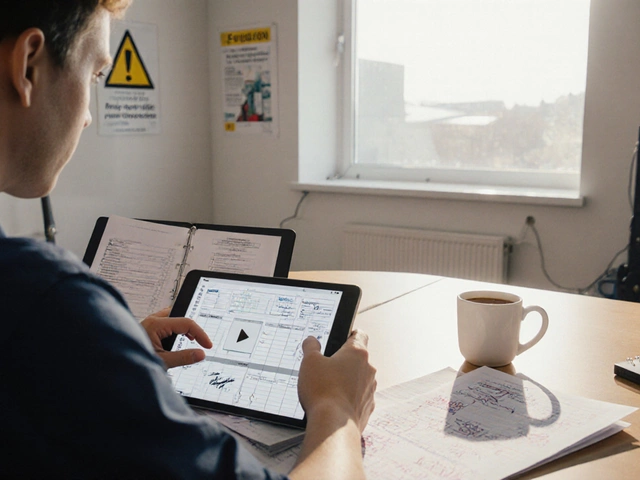Workplace Safety: Practical Tips and Training to Keep Your Team Safe
Every day you walk into a job site, you want to know you’re not putting yourself or others at risk. The good news? Simple habits and the right training make a huge difference. In this guide we’ll break down the basics of workplace safety, show you what courses can level‑up your skills, and give you quick actions you can start using right away.
Why Workplace Safety Matters to You
Accidents cost money, time, and morale. A single slip can shut down a project for days and leave a permanent mark on your reputation. When you follow proven safety steps, you protect your health, lower insurance premiums, and keep productivity high. Think of safety as the foundation that lets any other skill shine.
Essential Safety Habits You Can Start Today
1. Do a quick risk check before you start any task. Look for hazards like loose wires, wet floors, or heavy loads. If something feels off, pause and fix it – it’s faster than dealing with an injury later.
2. Wear the right gear. Hard hats, gloves, safety glasses, and steel‑toed boots aren’t optional accessories; they’re your first line of defense. Keep your equipment clean and replace anything worn out.
3. Maintain clear walkways. Clutter is a silent danger. Store tools on shelves, not the floor, and mark any uneven surfaces with warning tape.
4. Communicate hazards. Use simple signs or a quick shout‑out to let teammates know about risks. A short “wet floor” alert can prevent a slip that would cost hours.
5. Practice proper lifting. Bend at the knees, keep the load close to your body, and avoid twisting. If it’s too heavy, ask for help or use a trolley.
These habits take seconds, but the payoff is huge. When you embed them into your routine, safety becomes second nature.
Training Courses That Make a Real Difference
GoSkill offers short, hands‑on courses that fit around your job. Here are three popular options:
1. Health & Safety Fundamentals (Level 2) – A one‑day class covering risk assessments, emergency procedures, and legal duties. Ideal for anyone new to safety roles.
2. Manual Handling and Ergonomics – Learn the right way to lift, carry, and move objects without strain. You’ll get practical drills you can use on the shop floor.
3. Fire Safety & Evacuation Planning – Walk through fire‑extinguisher use, evacuation routes, and how to create a fire‑action plan for your site.
All courses include real‑world scenarios, so you leave with tools you can apply immediately. Plus, you earn a certificate that looks good on a CV and shows employers you take safety seriously.
How to Keep Safety Fresh in Your Workplace
Learning once isn’t enough. Schedule short “safety huddles” every week: gather the team for five minutes, share a quick tip, and ask if anyone spotted a new risk. Rotate the responsibility so everyone stays engaged.
Use check‑lists on the wall for daily inspections. When a checklist is completed, tick it off and celebrate the zero‑incident goal. Small wins keep the crew motivated.
Finally, track incidents and near‑misses. Even a close call holds a lesson. Review the data monthly, look for patterns, and adjust your procedures accordingly.
By combining solid habits, targeted training, and ongoing review, you build a safety culture that protects people and boosts your career. Ready to start? Pick a habit, sign up for a GoSkill course, and watch the difference unfold.











